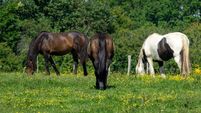Diseases can blow into herds
He said potential for field-to-field disease spread is greater in Ireland than in other EU countries, where cattle are in isolated blocks, and often housed rather than grazed. For example, BVD can blow into the farm — or can be in the foetus of a healthy purchased in-calf animal. If buying in, test, and quarantine until you get test results, he advised. Dr Chavasse said animals which are persistently infected (PI) with BVD drag down the entire herd’s immunity. Hence the need for bulk milk screening and blood testing to identify and cull PIs, which can look healthy and be long lived. Weanlings should be checked from seven months. Vaccination reduces spread.
Human infection is one of the dangers posed by leptospirosis; animals can be vaccinated from four weeks.













